Etsy is a prominent e-commerce platform specializing in handmade, vintage, and craft supplies. It's known for its unique and creative goods, connecting individual artisans and small businesses directly with buyers worldwide. Etsy fosters a community feel, emphasizing individuality and craftsmanship. It's great for finding unique gifts and supporting small businesses. But, like any online marketplace, it has its pros and cons.
Since its founding, Etsy has kick-started millions of maker businesses, offering a platform where artisans, vintage collectors, and crafters can connect with a global customer base. However, the landscape in 2025 looks markedly different from even a year ago, challenging the very entrepreneurs Etsy once empowered.
Mounting Costs Squeeze Sellers
For independent creators, profitability on Etsy is steadily being eroded by rising costs. The platform now levies a 6.5% transaction fee, not just on the item price but also on shipping and even gift wrapping. Every listing costs sellers $0.20 every four months, paid regardless of whether the item sells. These two core charges alone are enough to dent margins, but when off-site advertising fees and the platform’s unpredictable algorithm are factored in, the overall bite for many hovers at 10–15% off every order.
“For every $100 in revenue, I’m often losing $10 to $15 before I even count my own costs—and that’s not sustainable.”
,says a jewelry maker from Ohio
Growing Competition, Declining Visibility
The surge in Etsy’s popularity has also triggered an explosion in competition. In July 2025, sellers face a crowded marketplace of more than eight million active shops vying for customer attention, a significant climb from six million just last year. This densification means individual sellers are finding it harder than ever to secure a coveted spot in Etsy’s search results—a problem exacerbated by volatile algorithm updates that routinely shuffle product rankings.
“Even high-quality, best-selling items can get buried overnight,” a print artist notes. “We’re left guessing at what changed.”
Service Backlogs, Support Frustrations
Added to these financial and technical pressures are growing complaints about Etsy’s customer support. Service backlogs and slow response times have become top issues in seller forums, where entrepreneurs trade stories of unresolved disputes languishing for weeks. For small business owners whose livelihoods depend on prompt solutions, such delays can be devastating.
The Loss of Customer Ownership
What’s perhaps most galling for many creators is the realization that, despite the fees and the fight for visibility, they never truly “own” their customer relationships on Etsy. Communications, analytics, and marketing are all mediated through the platform, limiting sellers’ ability to turn one-time buyers into loyal fans and repeat customers.
A New Pivot: The Independent Storefront
Under these combined pressures, a rising wave of Etsy veterans are deciding it’s time to branch out. The logic is hard to argue with: building an independent ecommerce website—with tools like Shopify, Squarespace, or even simple Google Sheet-powered options like Store.link—puts creators in charge of their brand, pricing, and customer experience. Without listing fees, and with payment processing the only unavoidable cost, store owners keep a larger share of each sale.
Of course, going solo comes with its own set of challenges. Launching a branded site can take weeks of design tweaks. Inventory management is suddenly more complex when orders also arrive through Instagram, WhatsApp, or email. And without a marketplace’s built-in audience, attracting and retaining customers demands marketing prowess and technical know-how.
Still, for many, the tradeoff is worth it.
“If I’m going to work this hard, I’d rather invest in something I fully control—my shop, my brand, my customers.”
noted by a ceramicist.
Let's explore seven tools that empower you to build and grow your independent online business:
Store.link
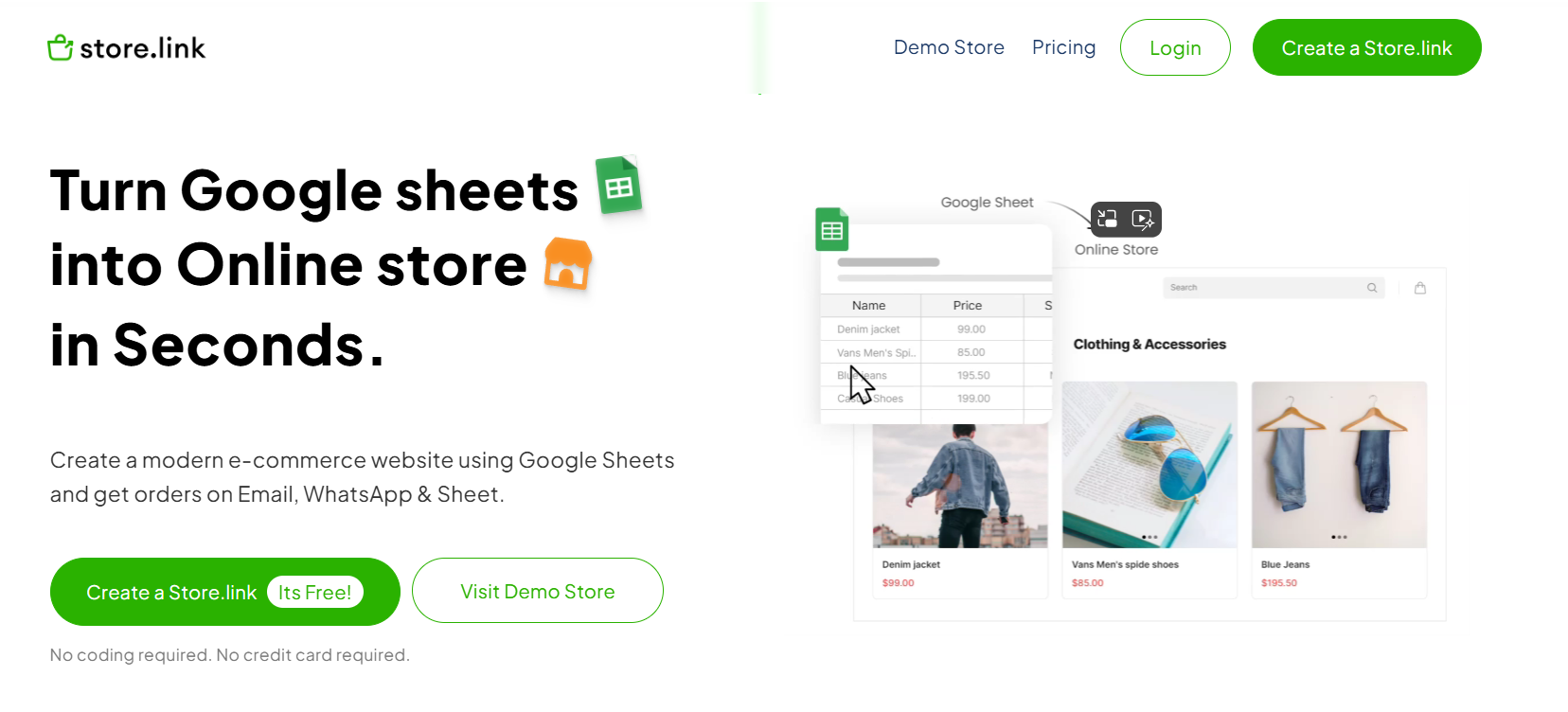
Store.link is a user-friendly tool designed to help you create an online store using Google Sheets. This platform allows users to manage their e-commerce operations effortlessly, enabling them to receive orders via Email, WhatsApp, and directly through the Google Sheet itself.
Store.link offers a compelling alternative to Etsy, particularly for those seeking a simpler, more cost-effective, and less technically demanding solution. Unlike Etsy, which involves navigating fees, algorithms, and a competitive marketplace, Store.link empowers you to create and manage your online store directly within a familiar Google Sheet. This approach streamlines inventory management, order processing, and customer communication, eliminating the complexities of traditional e-commerce platforms.
With Store.link, you maintain complete control over your brand and pricing, avoiding platform fees and algorithmic limitations. The ability to receive orders via email and WhatsApp adds further convenience, making it an attractive option for small businesses and individual sellers looking for a straightforward and efficient way to sell online.
What it is: A no-code tool that turns a Google Sheet into a mobile-ready e-commerce store. Simply paste product rows and share the link.
Why it wins over Etsy
- Zero listing or marketplace fees – keep the full price minus your payment-processor cut.
- Orders feed straight back into the same sheet, or via email / WhatsApp for instant chat.
- Brand control – custom domain, colors and your own checkout.
- Faster than any builder – real users launch in under five minutes.
Perfect for craft kits, digital templates, local food pop-ups, workshop tickets—anywhere convenience beats complexity.
Shopify
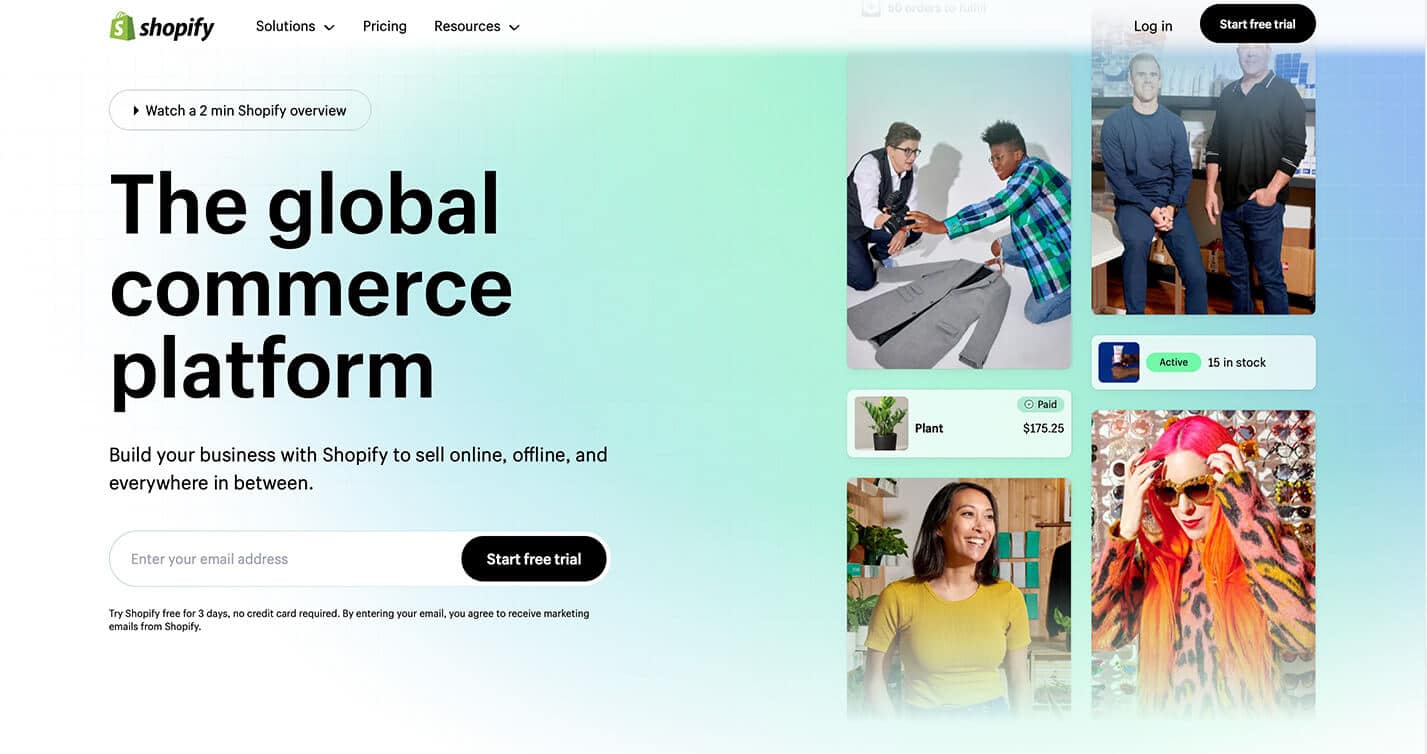
Shopify stands out as a robust e-commerce platform, offering a compelling alternative to selling on Etsy. Unlike Etsy's marketplace structure, Shopify empowers you to build and manage your own independent online store. This provides complete control over branding, pricing, and customer interactions, fostering a stronger connection with your audience.
Shopify's user-friendly interface requires no coding expertise, making it accessible to entrepreneurs of all technical skill levels. The platform handles essential aspects of running an online business, including secure payment processing, inventory management, and order fulfillment.
Shopify's scalability caters to businesses of all sizes, from startups to established enterprises, which makes it a great choice for anyone who wants to build a successful online business.
- Pricing: Basic plan starts at $29 USD/mo (billed annually) after a $1 for 3-month intro Shopify.
- Strengths: Powerful app marketplace, global payments, fulfillment partners.
- Trade-offs: Monthly fee + possible 2 % gateway surcharge if not using Shopify Payments.
Squarespace
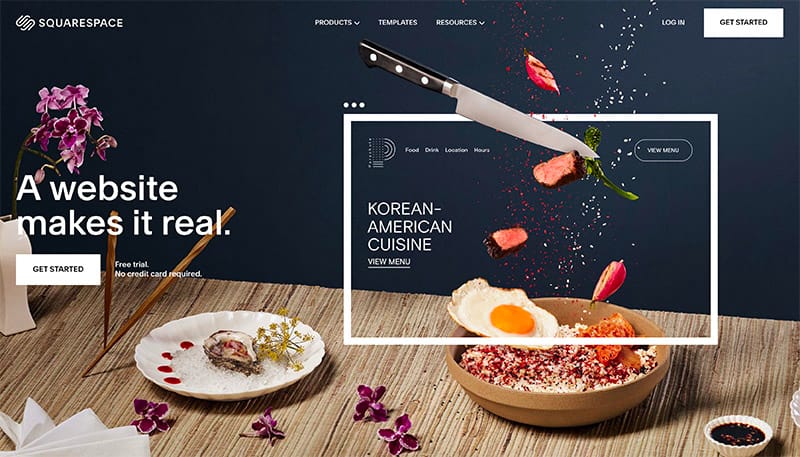
Squarespace is a fantastic platform for anyone looking to create a stunning online store while enjoying a user-friendly experience. It allows you to build a beautiful website that showcases your brand and products without needing any coding skills. Unlike Etsy, where you’re just one of many sellers, Squarespace gives you the freedom to design a unique online presence that truly reflects your style.
One of the standout features of Squarespace is its collection of professionally designed templates. These templates are not only visually appealing but also customizable, so you can make your site look exactly how you want it.
Plus, Squarespace offers helpful guides and tutorials that walk you through the process of setting up your store, managing your inventory, and even marketing your products. This means you can focus on what you love—creating and selling—while Squarespace takes care of the technical details.
- Pricing: Commerce Basic ≈ $23 USD/mo billed yearly (no transaction fee)
- Strengths: Stunning templates, integrated email campaigns, member areas.
- Trade-offs: Less inventory depth; advanced shipping needs add-ons.
Wix
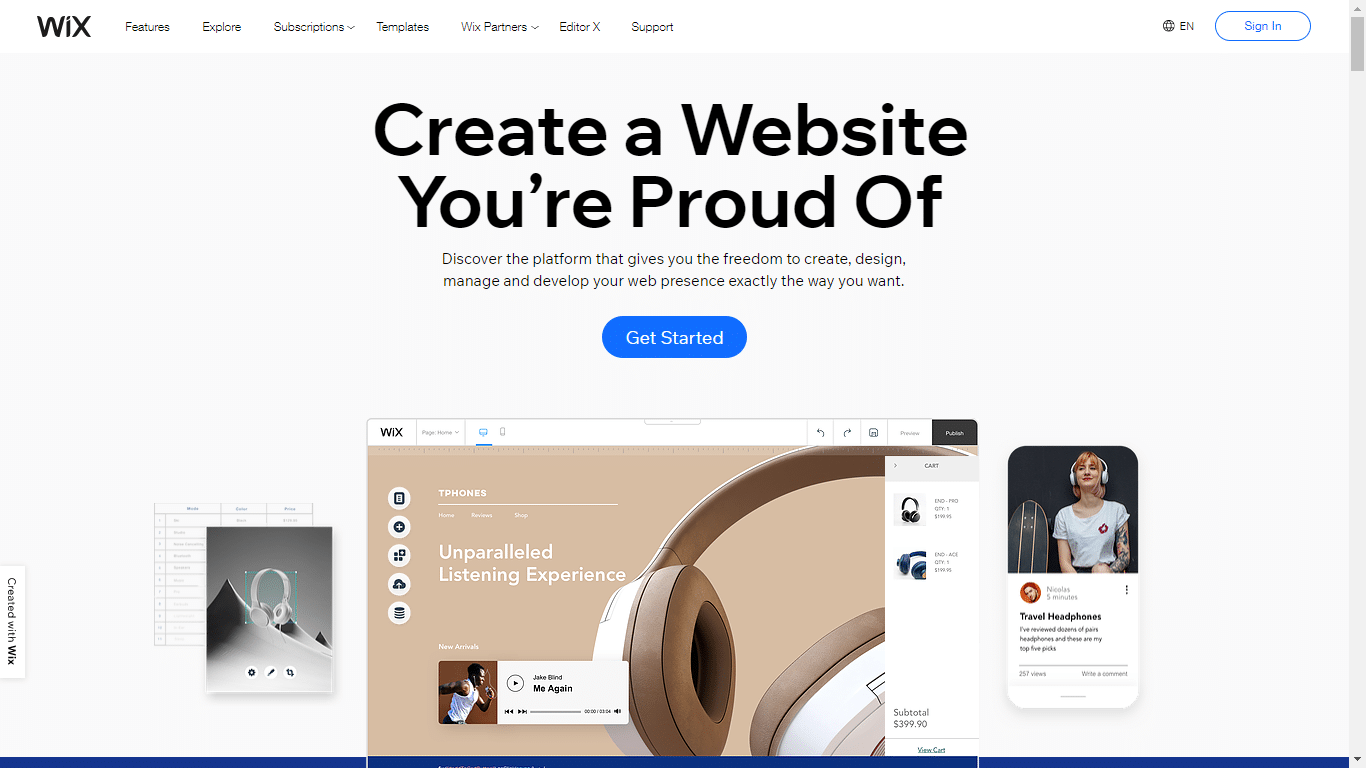
Wix is a great option for creating a beautiful online store without any coding knowledge. It offers over 900 free and customizable templates, so you can design a unique online presence that reflects your brand.
Wix also provides guides to help you set up your store, manage inventory, and process payments. You can sell a variety of products, from physical items to digital downloads and services. With Wix, you have complete control over your brand and profits.
- Pricing: Ecommerce plans from $27 USD to $159 USD/mo.
- Strengths: 900+ templates, built-in AI design, in-dashboard cart-recovery that can reclaim up to 16 % of abandoned carts when sent within an hour Wix.
- Trade-offs: Template freedom can tempt you into design rabbit holes; large app store costs can add up.
Big Cartel
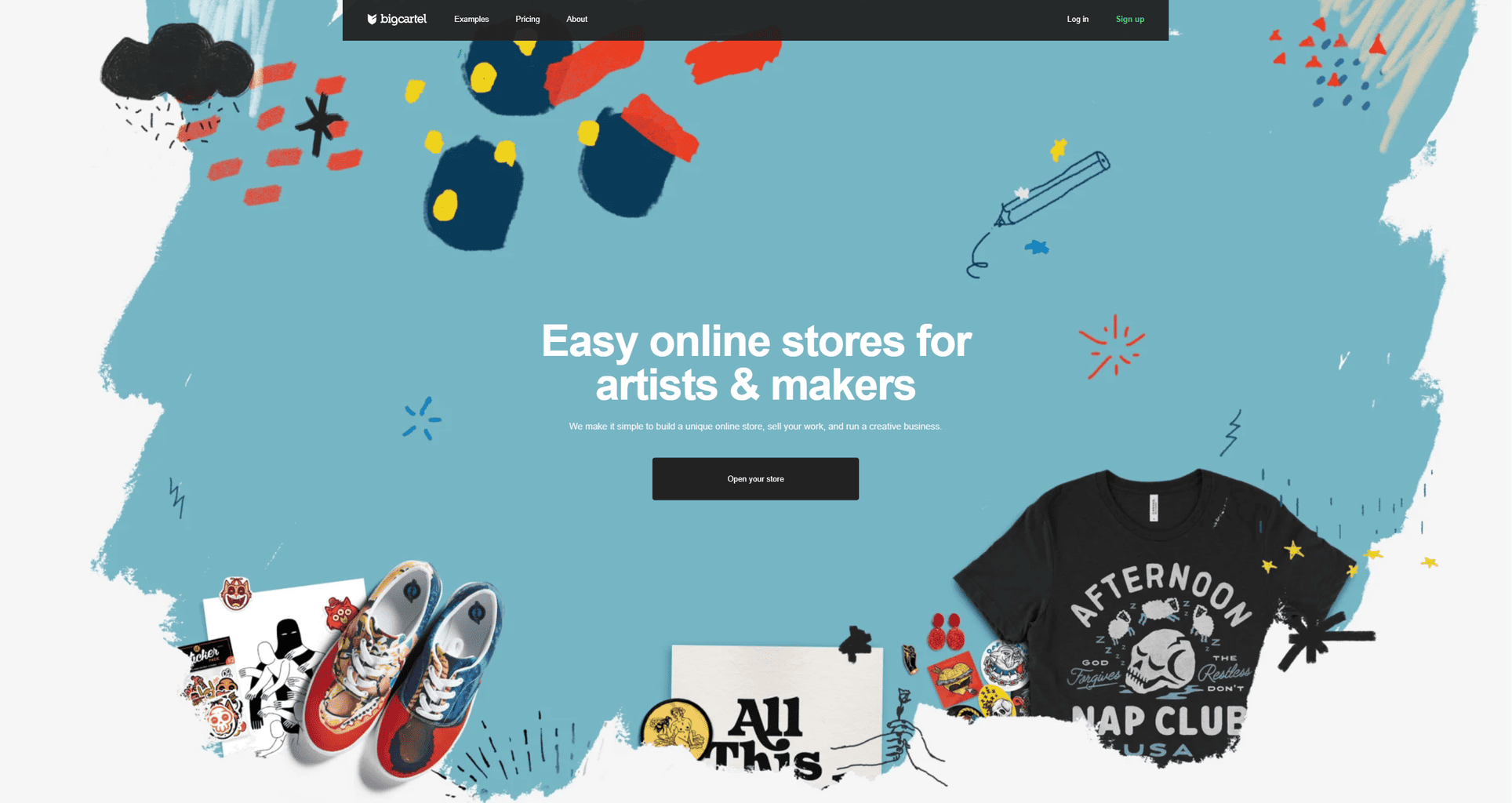
Big Cartel is a user-friendly e-commerce platform perfect for artists and creatives looking to sell their unique products online. Unlike Etsy's vast marketplace, Big Cartel offers a more intimate and curated selling experience. It's ideal for those who want to showcase their brand and work in a less crowded environment.
The platform is simple to navigate, even for beginners, and allows for easy customization of your online storefront. You get to control your brand aesthetic completely, ensuring your unique style shines through. While it might not offer the same extensive features as larger platforms, its focus on simplicity and ease of use makes it a great choice for independent creators looking for a hassle-free way to sell their work online.
- Pricing: Free Gold plan for 5 products; Platinum $15 USD/mo Big Cartel.
- Strengths: Zero platform fee, Etsy import tool, real-time stats.
- Trade-offs: Limited inventory on free tier; fewer payment integrations.
Indiemade

IndieMade is another good alternative to Etsy for artists and creators who want to build their own unique online brand. Instead of being just another seller in a vast marketplace, IndieMade empowers you to create a dedicated online shop that showcases your work in a personalized way.
It's user-friendly, even for those without technical expertise, and offers a high degree of customization, allowing you to design a store that truly reflects your style. You'll have complete control over your pricing and profits, giving you the freedom to run your business on your own terms. If you're looking to establish a distinct online presence and connect directly with your customers, IndieMade is a platform worth exploring.
- Pricing: Plans start at $4.95 USD/mo, 30-day free trial.
- Strengths: Blog, gallery, pages and store under one roof; one-click Etsy import.
- Trade-offs: Smaller template library; some advanced features need higher tier.
WooCommerce
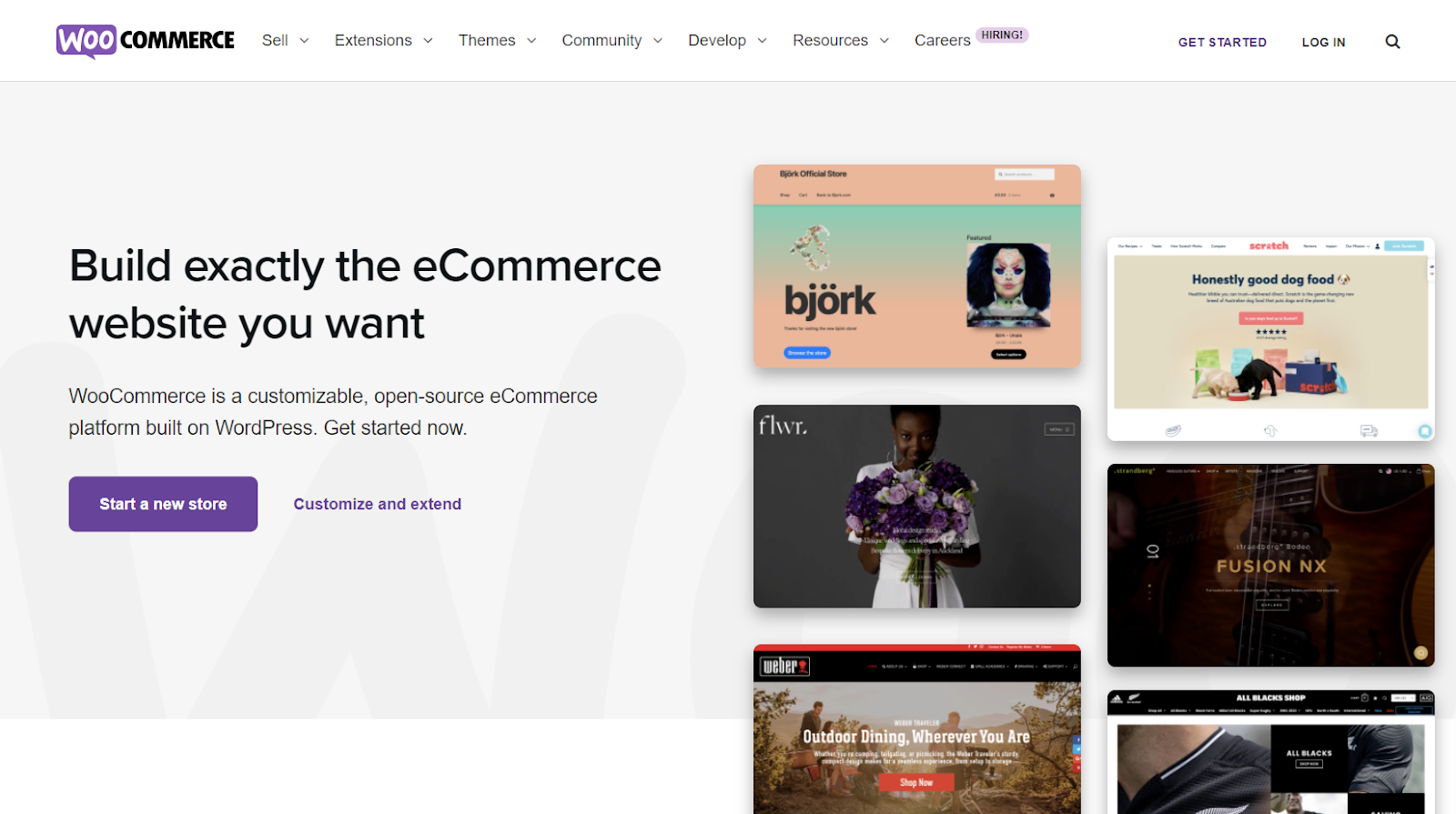
WooCommerce is an e-commerce platform that allows you to create a fully customized online store right on your WordPress site. Unlike Etsy, which operates as a marketplace where you compete with countless other sellers, WooCommerce gives you complete control over your brand and customer experience. You can tailor your store's design and functionality to match your unique style, ensuring that your products stand out. Plus, with WooCommerce, you manage everything from inventory to payments, allowing for a more personalized approach to your business.
However WooCommerce is a bulky tool and has a steep learning curve.
- Pricing: Core plugin free; real-world costs depend on hosting and paid extensions (≈ $4–$480 /mo).
- Strengths: Open-source flexibility, huge plugin ecosystem, complete brand control.
- Trade-offs: DIY hosting & updates, steeper technical learning curve.
Amazon Handmade
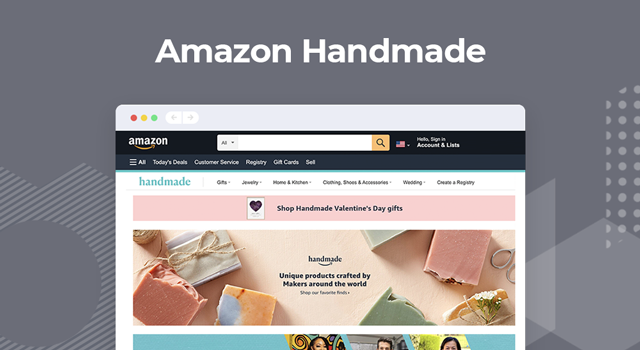
If you're looking for a platform with a vast reach and a loyal customer base, Amazon Handmade is a fantastic choice. As part of the Amazon ecosystem, you'll benefit from their established logistics and customer service, making it a streamlined experience for both you and your buyers. Plus, Amazon's reputation for reliability and trustworthiness can give your brand an extra boost.
- Fees: 15 % referral fee; no listing or payment-processing fee Sell on Amazon.
- Strengths: Prime trust, FBA logistics, global audience.
- Trade-offs: Branding limited to profile; Professional seller plan ($39.99/mo) required but fee is waived after approva
eBay
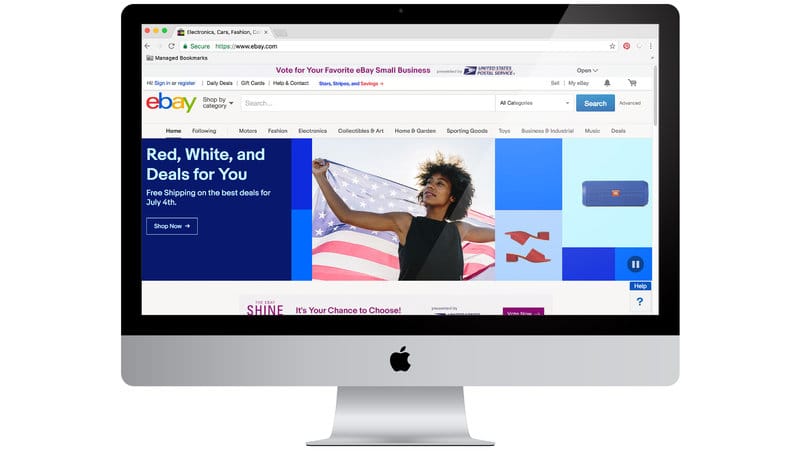
eBay is a classic marketplace known for its wide variety of products, including handmade items. It's a great option for those who want to reach a global audience and tap into a diverse pool of potential buyers. eBay's established system for auctions and "Buy It Now" options provides flexibility for sellers and can help you find the best price for your products.
- Pricing: Up to 250 free listings; typical final-value fee ~12 % + $0.30 per order.
- Strengths: 130 M+ active buyers, worldwide shipping programs, strong brand trust.
- Trade-offs: Highly competitive, limited storefront branding, cumulative fees can add up.
Bonanza
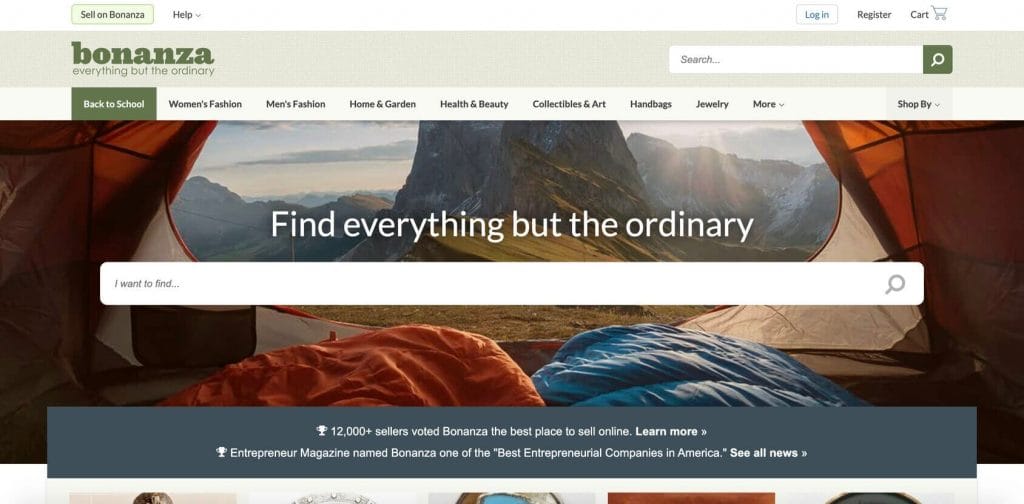
This marketplace focuses on unique and vintage items, making it a great option for artists and crafters who specialize in one-of-a-kind creations. Bonanza boasts a user-friendly interface and a strong community of buyers who appreciate handmade and vintage goods. It's a great place to showcase your artistic flair and connect with like-minded customers.
- Pricing: Free listings; final-value fee 11 % + $0.25 per sale.
- Strengths: Easy Etsy/eBay import, Google Shopping syndication, seller-friendly perks.
- Trade-offs: Smaller buyer pool, visibility often tied to paid ad tiers.
Compare all Etsy alternatives
| Platform | Pricing & Best For |
|---|---|
| Store.link Google Sheet → live store |
Mostly free and then $10/mo (side-hustlers & micro-brands) |
| Shopify Stand-alone SaaS store |
$1 for 3 mo, then $29/mo (brands ready to scale) |
| Squarespace Design-first site builder |
From ≈ $23/mo (annual billing) (creatives & visual sellers) |
| Wix Drag-and-drop builder |
From $27–$159/mo (DIY entrepreneurs) |
| Big Cartel Lightweight indie store |
Free (5 items), paid from $15/mo (artists with small catalogs) |
| IndieMade Artist CMS w/ blog & gallery |
From $4.95/mo after 30-day trial (makers wanting blog + gallery + store) |
| Amazon Handmade Curated marketplace |
15% referral fee (sellers needing Amazon’s reach) |
| WooCommerce WordPress plugin-based store |
Hosting from ~$10/mo; add-ons extra (WordPress users & custom shops) |
| eBay Established global marketplace |
Listing/final value fees (~12.9% avg.) (high-volume & global sellers) |
| Bonanza Marketplace for unique/vintage goods |
3.5%–9% final value fee (niche/vintage & specialty sellers) |
Owning Your eCommerce Future
Moving away from Etsy isn’t just about picking a new platform—it’s about taking control of your business. Many artisans feel trapped by Etsy’s high fees, tough competition, and limited visibility, which can make it hard to connect with customers.
Switching platforms takes careful planning. Mistakes like closing your shop suddenly, losing customer reviews, or not guiding people to your new site can hurt your business. A smart move means keeping your brand strong and bringing your customers along.
The real goal is freedom. Whether you pick Store.link for its simplicity, Shopify for its powerful tools or Squarespace for its beautiful designs, you’re building a direct relationship with your customers. This is your chance to stand out, not just blend into a crowded marketplace.
By saving your reviews, collecting customer emails, and directing fans to your new store, you’re not just moving—you’re creating a lasting business. In today’s world of handmade selling, owning your future isn’t just a plan—it’s a commitment to your craft and your customers.


